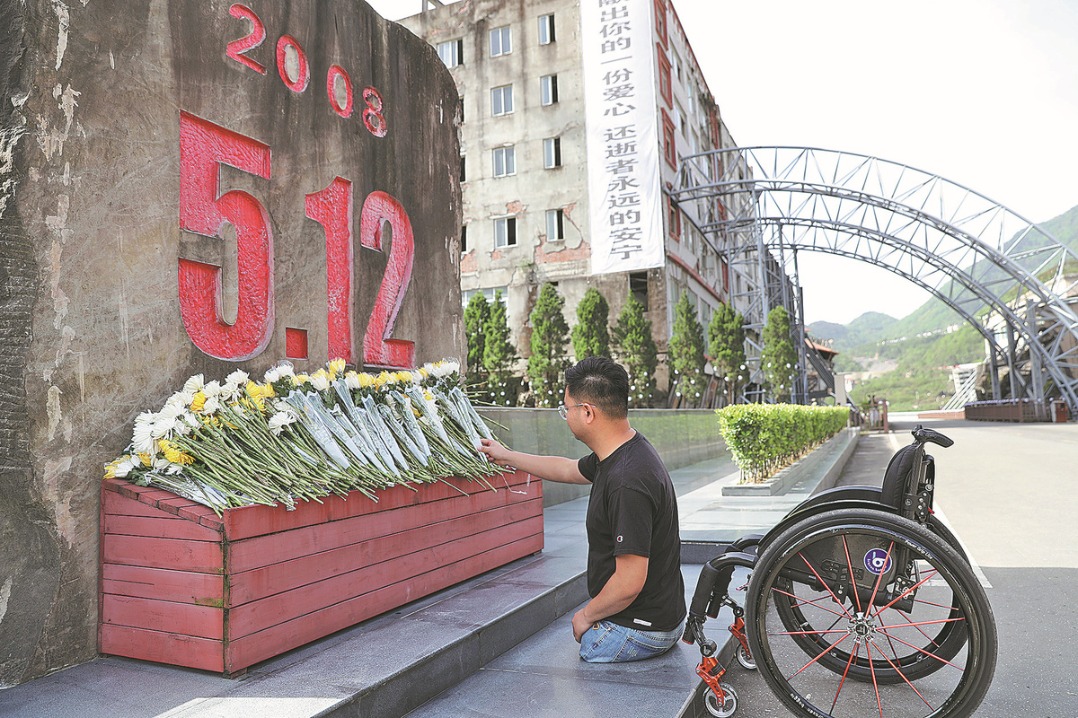US Navy removes captain of stricken aircraft carrier
By ANDREW COHEN in New York | chinadaily.com.cn | Updated: 2020-04-03 09:41

The US Navy relieved the commander of the aircraft carrier USS Theodore Roosevelt on Thursday three days after a letter he wrote seeking the Pentagon's help in dealing with a coronavirus outbreak aboard his ship leaked to the public.
The removal of Captain Brett Crozier from the command of the 5,000-person vessel was announced by acting Navy Secretary Thomas Modly, who said the commander exercised poor judgment by allowing his letter to find its way to the US media, where it attracted wide attention this week.
"It raised alarm bells unnecessarily," Modly said.
About 100 sailors on the ship, now docked in Guam, have tested positive for the coronavirus.
Democrats on the House Armed Services Committee criticized Modly's decision in a statement Thursday: "While Captain Crozier clearly went outside the chain of command, his dismissal at this critical moment — as the Sailors aboard the U.S.S. Theodore Roosevelt are confronted with the COVID-19 pandemic — is a destabilizing move that will likely put our service members at greater risk and jeopardize our fleet's readiness."
In the letter dated Monday, Crozier requested the removal and isolation of more than 4,000 sailors from his ship, writing: "We are not at war, and therefore cannot allow a single Sailor to perish as a result of this pandemic unnecessarily. Decisive action is required now."
In his letter, Crozier recommended offloading most of the crew on Guam then quarantining and testing them while the ship underwent a thorough cleaning.
"Removing the majority of personnel from a deployed U.S. nuclear aircraft carrier and isolating them for two weeks may seem like an extraordinary measure. ... This is a necessary risk," Crozier wrote in his four-page letter. "Keeping over 4,000 young men and women on board the TR is an unnecessary risk and breaks faith with those Sailors entrusted to our care."
Modly told CNN after the letter leaked that the Navy was trying to move sailors off the Roosevelt but that there was not enough room in Guam to quarantine the entire crew.
"We're having to talk to the government there to see if we can get some hotel space, create some tent-type facilities there," Modly said. "We're doing it in a very methodical way because it's not the same as a cruise ship."
Crozier's letter put the Pentagon on the defensive about whether it was doing enough to keep the ship's crew safe, and it alarmed the families of those aboard the vessel, whose homeport is San Diego, California.
Admiral John Aquilino, commander of the US Navy's Pacific Fleet, told reporters Tuesday that "we're welcoming feedback" from Crozier and that the Navy's plan was to rotate crew members off the ship for testing and possible quarantine before allowing them return aboard.
The goal, he said, was to keep the ship mission-ready, adding that no crew members had been hospitalized by that point.
The conflict highlights a central problem for the Pentagon: Keeping active-duty service members on the job in the midst of a pandemic while trying to maintain their safety. Social distancing is all but impossible under military conditions like crowded ships and barracks. It's been frequently pointed out that during World War I, more US military personnel died from the Spanish flu than in combat.
Defense Secretary Mark Esper said that the US military will find a way to protect troops from COVID-19 while maintaining combat readiness. "I'm fully confident that we will remain prepared to conduct all of our missions," Esper said Tuesday at the Pentagon.
The infected crew members apparently contracted the disease during a port call in Da Nang, Vietnam. Modly defended the carrier's visit to the country, which at the time had around 100 coronavirus cases in the region around Hanoi, which is nearly 500 miles away from Da Nang.
The Roosevelt was patrolling in the Pacific when the Navy reported its first coronavirus case a week ago.
Reuters contributed to this story.
























